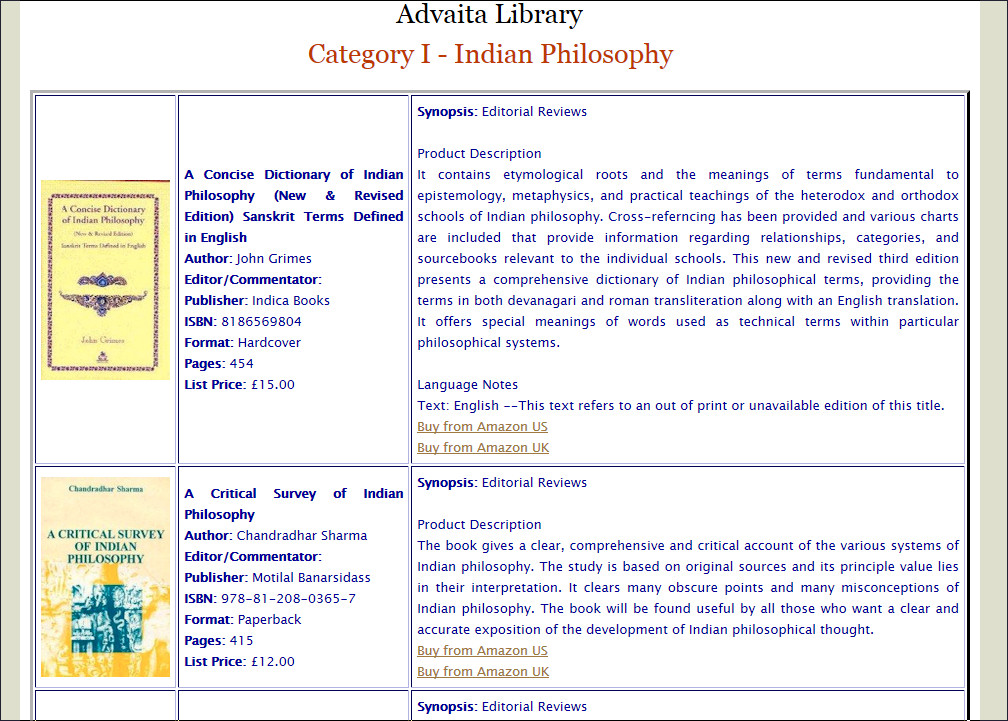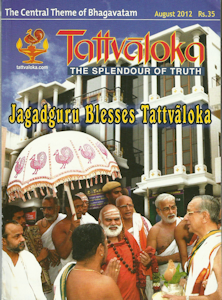(Ramesam asked me to review the following article, with which I complied after much hesitation. The article is over 40 p. long and quite dense and complicated in parts – in other words, ‘academic’: for specialists only; one could add: cutting the slices so thin, that the substance is practically lost, or forgotten).
Review of ‘A New Approach to Understanding Advaita as Taught by ´Sa ˙ nkara Bhagavadp¯ada’ – by Ramakrishnan Balasubrahmanian
The first impression, on a quick glance at the beginning of the article, is that the criticisms of the author contained in the article, and addressed to the writings of Swami Satchidanandendra Saraswati (SSS), a recognized sage and scholar, are extensive to the latter’s whole opus, as coming from an uncompromising position concerning the teachings and method of Shankaracharia. Some of the words and expressions used in the article are quasi-litigious (e.g., ‘intellectual arrogance’, ‘vociferously opposes’, ‘pointless’, ‘glaring inconsistency’, ‘making errors’, ‘misconstruing’, ‘twisting’, ‘has invented a new term’, etc.), reminiscent of the theological disputes and diatribes in the European Middle Ages. Evidently, SSS had his followers as well as his detractors, and the same can be said of the author of this article, who belongs to an opposite camp. Occasionally, he shows signs of (partial) approval of his adversary’s (if one can use this term) enunciates; for example: “No doubt SSS’s textual analysis skills are excellent, but the problem I see with SSS’s writings is his obsession with terminology, rather than philosophy. Indeed none of his works are about the philosophy of advaita [!], but are oriented almost exclusively towards contradicting previous commentators of ´Sa˙nkar¯ac¯arya”. And soon after that: “The difference between Padmapada and SSS is that the former is a philosopher, while the latter is a textual analyst”. Concerning these pervading criticisms of the work of SSS by the author, Ramakrishna Balasubramanian (RB), the reader may judge whether they are excessive, unwarranted, or justified.
The main criticism by the author, in respect of the interpretation of avidya by SSS, is that this is not due to a double superimposition of the self and the non-self, as the latter maintains, but only to a superimposition of a subject, non-self, on the self: “[T]he fundamental error is a superimposition of an observer on the real… and by a reverse process the inner self, which is the witness of everything, is superimposed on the inner-organ”. He calls this reverse act (or process, as he calls it) ‘natural’, since “a superimposition of observer on the self naturally leads to the imagination of objects ‘outside’ and ‘inside’ the observer, just as described by Gaud.ap¯ad¯ac¯arya”. He adds: “The usage of the continuative ‘adhyasya’ in the above passage also clearly indicates that the superimposition of an observer is avidy¯a and is prior to the reverse superimposition”.
Logically prior?, prior in time? Or simultaneous, by mutual implication? Continue reading →





